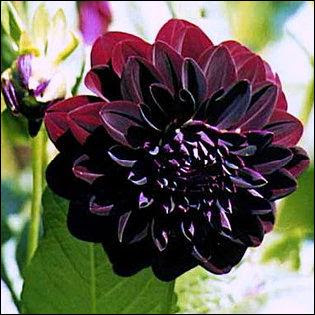It always strikes me that lots of people still buy and grow relatively common plants when the vegetal kingdom literally bursts with beauty beyond realm!
There is an enormous variety of "drop dead gorgeous" plants that pass quite neglected by lots of nurseries and gardeners and the mere fact that quite a few of theese plants come from tropical regions and hence demand special growing conditions, is not enough to explain the lack of popularity. We take enormous efforts to grow ( or better say slowly torture) orchids but ignore other creatures which are far more easy to grow.
Brownea is one of these creature worth knowing!
It is a species in the subfamily
Caesalpinioideae of the family
Fabaceae. Common names include
Scarlet Flame Bean,
Mountain Rose,
Rose of Venezuela .
The species is native to Brazil, Venezuela, Guyana and Trinidad.
It is also commonly cultivated in other countries including Africa and the Seychelles.
The family counts some 30 different species all of them varying from small trees up to 20 m ones.
Leaves are evergreen, pinnate and quite big - depending on the species, and when young present a distinct pink - bronze colouring.
The tree is relatively slow growing and tends to form a dense umbrella shaped canopy.
Brownea Grandiceps, Lemaire 1850
The huge terminal heads of
bright pink or scarlet flowers though make this tree absolutely unique.
From spring into summer, tightly closed, claw-like flower buds emerge in
the vicinity of branch tips. The
buds open up, from the cluster's outside inward, to create a bright
orange-red flower head ball. The flower cluster looks like
a scarlet pincushion with lots of golden-red stamens. Individually, a
blossom is bell-shaped and releases huge amounts of nectar to attract
pollinating hummingbirds.
They bear a slight resemblance to some Rhododendrons, maybe because the flower heads are round and some species have elongated, oval leaves.
The plant is likely to bloom after 3 or 4 years.
It produces large seed pods with flat bean like seeds ( after all it belongs to the pea Family)
Brownea Coccinea
Brownea Macrophylla
They may be grown outdoors in mild and subtropical areas.
Otherwise these plants can be grown in large pots or tubs filled with
equal parts of peat and loam with sand added. The required, minimum
temperature is 55 degrees F. Repotting should be done in March. For a few
weeks after repotting, water sparingly. During the winter, very little
water is needed. The Brownea does not like repoting though, so you should better grow it in large pots and avoid manipulating it too much.
As all tropical plants it needs high air humidity.
As with many other tropical creatures, it might not withstand frosts but it is worth trying to acclimatize it in Mediterranean areas where Jacarandas and Plumerias perform quite well once the tender "childhood" years are over. Otherwise we take great trouble in moving trogs and pots indoors for winter and we could try doing it for such a special lady as well.





































